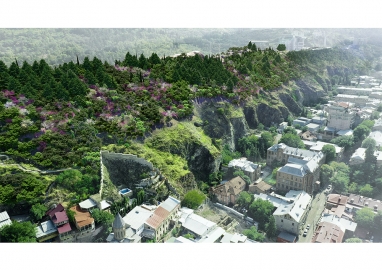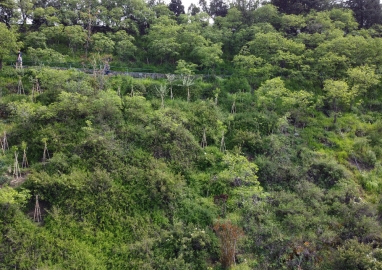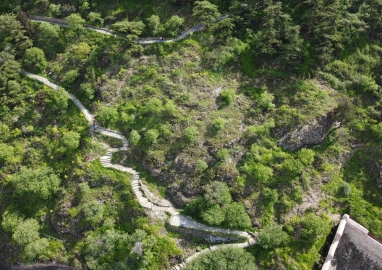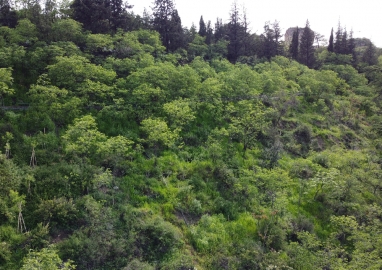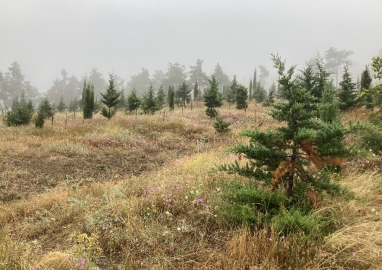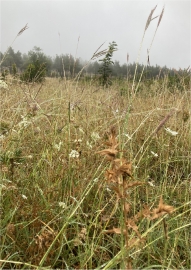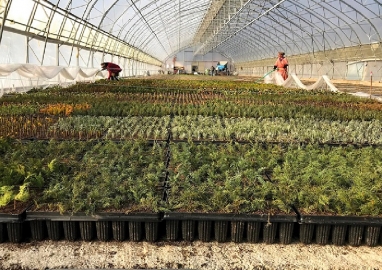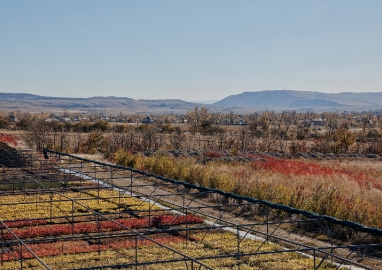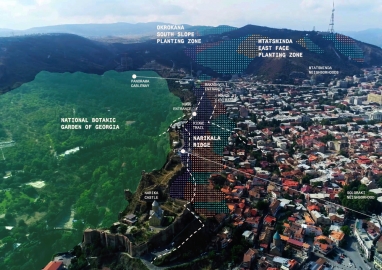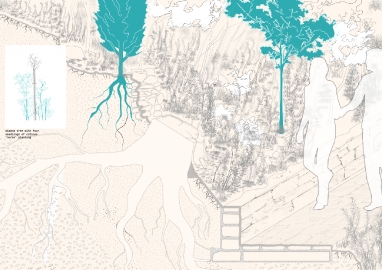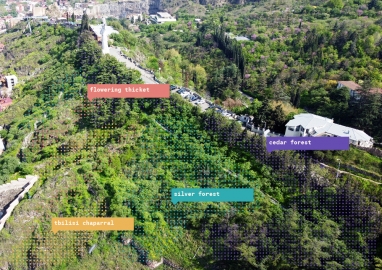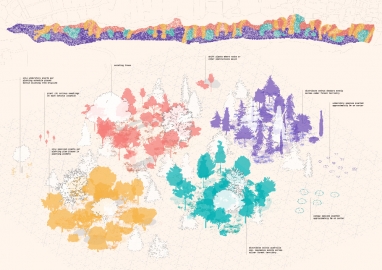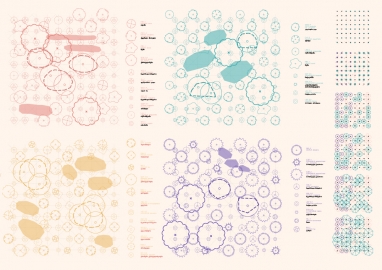Tbilisi Urban Forest (Narikala Ridge Forest)
In 2020, city leaders in Tbilisi, Georgia, initiated a project to replant the Tbilisi Urban Forest with a biodiverse palette of endemic and climate-adapted species. Ruderal developed and tested a novel approach to urban afforestation that integrates ecology, technology, and aesthetics via two planting projects within the 700-hectare territory.
Tbilisi Urban Forest aims to improve biodiversity habitat, build resilience to climate change, and provide new recreational opportunities for citizens and tourists. In the mid-20th century, Soviet planners planted pine monocultures to reduce erosion and cool the city. The aging plantations suffered significant die-off from pests and fungi, posing a fire hazard and public safety risk. The design and research team selected two pilot areas: The Narikala Ridge is a north-facing cliffside bridging the historic city center to the National Botanical Garden of Georgia, and Okrokana, a south-facing slope in a peri-urban settlement in the hills above Tbilisi to test new approaches to afforestation.
Ruderal adapted the work of environmental scientists to create detailed spatial plans for coherent “patches” of plant communities keyed to different soil and slope conditions. The patches integrate existing trees with new saplings, shrubs, and specimen trees that are grafted into the microtopography and soil pockets carved out for the initial pine plantations of the mid-20th century. The species diversity and vertical heterogeneity of the plantings provide cover for wildlife.
The scale and complexity of the project required new tools to manage the large spatial dataset and model typical scenarios. Ruderal developed a parametric planting design tool in Grasshopper that reconciles typical planting conditions with precise site-specific spatial data. The tool allows designers to rapidly visualize the patches at different scales, adapt and optimize species mixes relative to nursery inventory, and simulate the interaction of diverse species over time. Ruderal will adapt the work from the pilot project to the remaining territory and other afforestation projects in Europe and beyond.
The saplings, shrubs, and specimen trees for the project are propagated in Georgian nurseries and collected from local seed stocks, unlike other municipal projects that rely on imported trees and shrubs. By using local species and seed stocks, the project links the city to the surrounding ecological context and supports a growing network of native plant nurseries. Drawing from this network of local nurseries, rather than importing species from abroad, significantly reduces the project’s carbon footprint.
The afforestation approach includes an additional layer of “nurse plants” to increase the new seedlings' survival rate. Each new sapling is surrounded and supported by nurse plant seedlings (mainly Cotinus coggygria) that provide shade, shelter from the wind, and protection from herbivores and improve the soil quality by adding organic matter and nutrients. Additionally, the faster-growing nurse plants provide the first visual evidence of the project’s scale and effect. After one year, the irrigation and planting project has seen nascent plant communities emerge, including planted and volunteer species suppressed by the former pine canopy.

